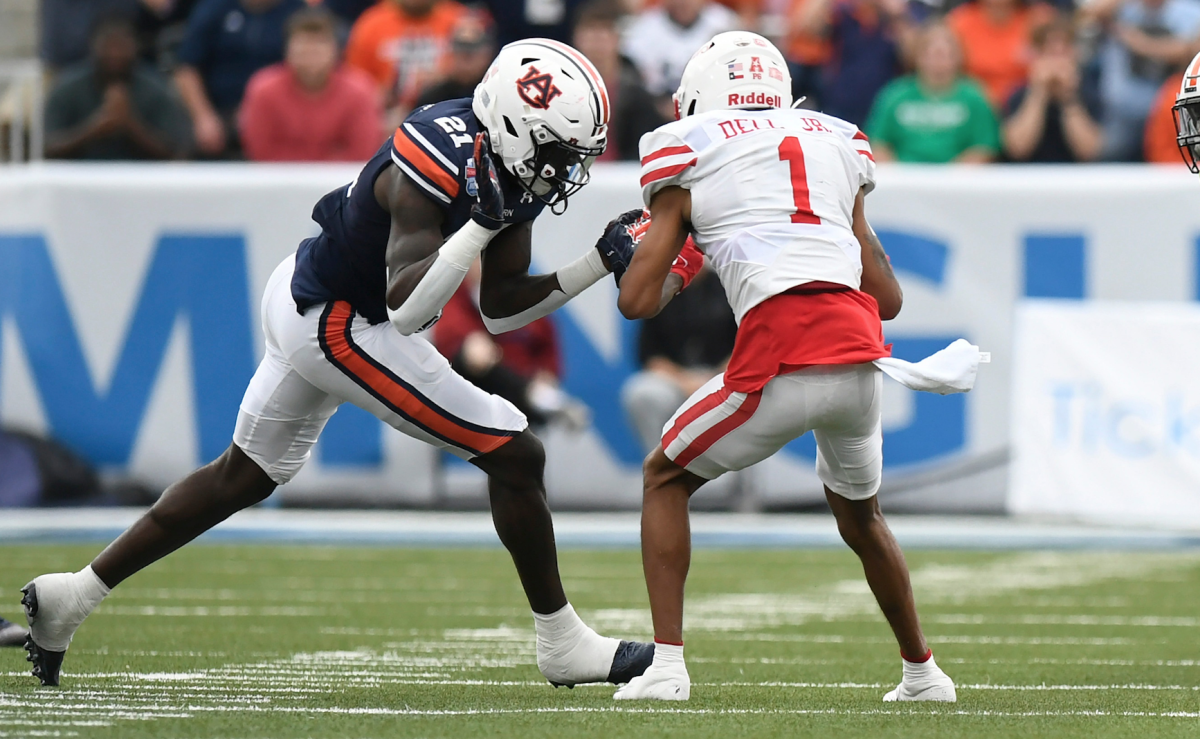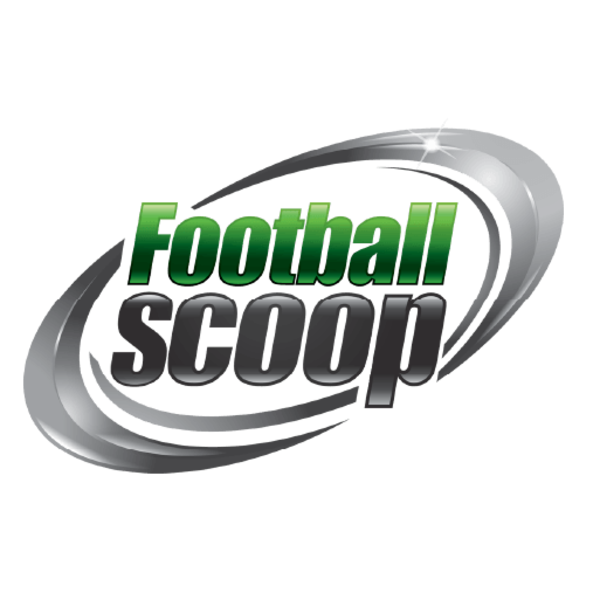The NCAA Football Rules Committee on Friday moved to ban all below-the-waist blocking outside the tackle box. Furthermore, any player who is not a lineman or a "stationary back inside the tackle box" would be prohibited from throwing cut blocks, period.
The committee cited data that shows passing the rule would cut down on the number of knee injuries suffered over the course of the season. "This proposal is a continuation of the committee's effort to enhance student-athlete safety," said Steve Shaw, secretary-rules editor.
Friday's announcement was series a recommendations by the Football Rules Committee. Only Playing Rules Oversight Panel has the power to codify them into rules; the Panel meets next on April 20. If (when) they are approved, each rule will go into effect for the 2022 season.
In addition to the cut block rule, the committee recommended tweaking -- but not wholesale changing -- the targeting rule.
In games that have instant replay, any second-half targeting foul would still result in an immediate ejection of that game, but carrying that suspension over to the first half of the following game would be eligible for appeal.
How does the appeal process work? From the NCAA: "The process would begin with a conference submitting a request to Steve Shaw, the NCAA national coordinator of officials, who would review video of the play. If it is clearly obvious that a player was incorrectly penalized for targeting, the call would be overturned, and the player would be cleared to play in the first half of the next game."
The NCAA resisted going to a red card/yellow card format by citing data that the risk of concussion on targeting plays is 49 times higher than a regular play, according to figures obtained by Sports Illustrated. Crucially, the risk of targeting was found to be higher even on plays when targeting was overturned than on non-targeting plays. The silver lining: the data showed players had just a 0.3 percent chance of concussion on plays were targeting was not called, which, of course, was the vast majority of plays across the season.
"The committee strongly supports the targeting rule and believes it continues to directly support player health and safety and technique," said Stanford head coach David Shaw, chairman of the rules committee. "Adjustments have been made in recent years to ensure proper enforcement, which is very important, given the significant penalty associated with the rule. It is understood that targeting receives a lot of media and fan attention — and rightfully so. In the rare instance when a penalty is incorrectly applied, we believe there should be a mechanism to correct it before the next week to enhance this rule."
In another tweak that will frustrate many, the committee chose to address alleged injury fakers by implementing an investigation and appeal process.
If approved, schools and conferences will be able to report obvious violators of the injury timeout process to the national coordinator of officials, but the implementation of any punishment would be up to each individual school or conference.
Many observers called for the committee to banish any player who causes an injury timeout for a standard period of time, be it the remainder of the drive, the remainder of the quarter, or something else. The committee feared incentivizing actual injured players from staying on the field too long when they should be asking for help.
David Shaw instead favored making the offenders think long and hard about their actions.
"It is very difficult to legislate ethics, particularly when an injury timeout is being used to gain an advantage," David Shaw said. "The small number of teams that seem to use these tactics should be addressed directly."
Other items of note:
-- The committee noted that changes to the kickoff rule (allowing the receiving team to call a fair catch within the field of play and take the ball at the 25-yard line, and the removal of double teams and blindside blocks) have been successful. "Analysis of available NCAA injury surveillance data indicates that the proportion of injuries attributed to kickoff plays are trending downward and is now similar to that of other scrimmage plays," the NCAA said.
-- The committee recommended the "Kenny Pickett rule," declaring a ballcarrier down the moment he begins motioning toward a feet-first slide.
-- Defensive holding would remain a 10-yard penalty but always carry an automatic first down.
-- The committee recommended adopting NFL-style sock rules, requiring each sock to cover the entire area from cleat to knee.

 footballscoop.com
footballscoop.com
The committee cited data that shows passing the rule would cut down on the number of knee injuries suffered over the course of the season. "This proposal is a continuation of the committee's effort to enhance student-athlete safety," said Steve Shaw, secretary-rules editor.
Friday's announcement was series a recommendations by the Football Rules Committee. Only Playing Rules Oversight Panel has the power to codify them into rules; the Panel meets next on April 20. If (when) they are approved, each rule will go into effect for the 2022 season.
In addition to the cut block rule, the committee recommended tweaking -- but not wholesale changing -- the targeting rule.
In games that have instant replay, any second-half targeting foul would still result in an immediate ejection of that game, but carrying that suspension over to the first half of the following game would be eligible for appeal.
How does the appeal process work? From the NCAA: "The process would begin with a conference submitting a request to Steve Shaw, the NCAA national coordinator of officials, who would review video of the play. If it is clearly obvious that a player was incorrectly penalized for targeting, the call would be overturned, and the player would be cleared to play in the first half of the next game."
The NCAA resisted going to a red card/yellow card format by citing data that the risk of concussion on targeting plays is 49 times higher than a regular play, according to figures obtained by Sports Illustrated. Crucially, the risk of targeting was found to be higher even on plays when targeting was overturned than on non-targeting plays. The silver lining: the data showed players had just a 0.3 percent chance of concussion on plays were targeting was not called, which, of course, was the vast majority of plays across the season.
"The committee strongly supports the targeting rule and believes it continues to directly support player health and safety and technique," said Stanford head coach David Shaw, chairman of the rules committee. "Adjustments have been made in recent years to ensure proper enforcement, which is very important, given the significant penalty associated with the rule. It is understood that targeting receives a lot of media and fan attention — and rightfully so. In the rare instance when a penalty is incorrectly applied, we believe there should be a mechanism to correct it before the next week to enhance this rule."
In another tweak that will frustrate many, the committee chose to address alleged injury fakers by implementing an investigation and appeal process.
If approved, schools and conferences will be able to report obvious violators of the injury timeout process to the national coordinator of officials, but the implementation of any punishment would be up to each individual school or conference.
Many observers called for the committee to banish any player who causes an injury timeout for a standard period of time, be it the remainder of the drive, the remainder of the quarter, or something else. The committee feared incentivizing actual injured players from staying on the field too long when they should be asking for help.
David Shaw instead favored making the offenders think long and hard about their actions.
"It is very difficult to legislate ethics, particularly when an injury timeout is being used to gain an advantage," David Shaw said. "The small number of teams that seem to use these tactics should be addressed directly."
Other items of note:
-- The committee noted that changes to the kickoff rule (allowing the receiving team to call a fair catch within the field of play and take the ball at the 25-yard line, and the removal of double teams and blindside blocks) have been successful. "Analysis of available NCAA injury surveillance data indicates that the proportion of injuries attributed to kickoff plays are trending downward and is now similar to that of other scrimmage plays," the NCAA said.
-- The committee recommended the "Kenny Pickett rule," declaring a ballcarrier down the moment he begins motioning toward a feet-first slide.
-- Defensive holding would remain a 10-yard penalty but always carry an automatic first down.
-- The committee recommended adopting NFL-style sock rules, requiring each sock to cover the entire area from cleat to knee.

NCAA moves to ban cut blocks outside the tackle box, targeting foul tweak, other rule changes
The NCAA Rules Football Rules Committee recommended a tweak to the targeting foul and a half-measure to deter injury fakers.
